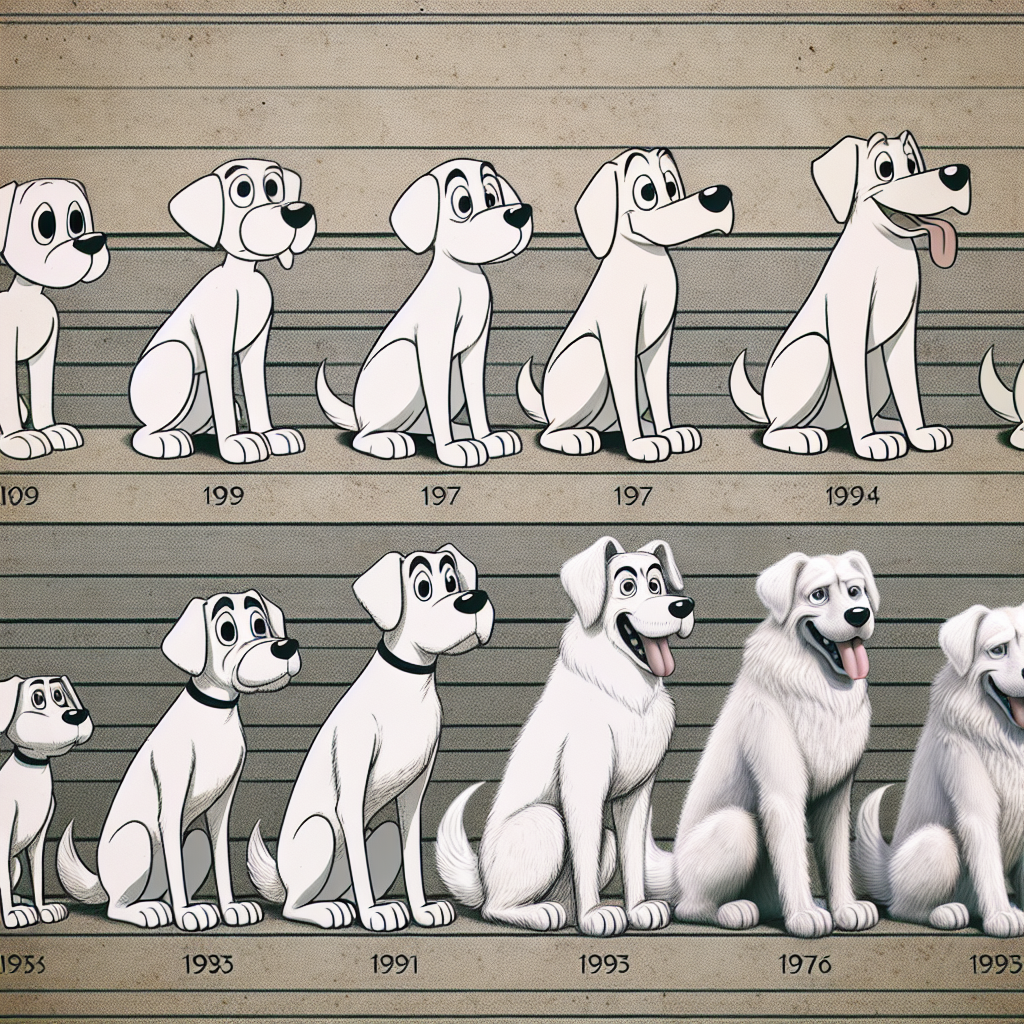When we think of iconic white dog characters in animation, names like Snoopy from “Peanuts” and Snowy from “The Adventures of Tintin” immediately come to mind. These beloved canine companions have captured the hearts of audiences for generations, but have you ever stopped to think about the evolution of white dog characters in animation? From their humble beginnings to their modern-day interpretations, white dog characters have played a significant role in shaping the world of animated entertainment. Join me as we explore the fascinating journey of these lovable characters and discover how they have evolved over time.
The Early Days: Snoopy and the Birth of White Dog Characters
It all started with a beagle named Snoopy. Created by Charles M. Schulz for his comic strip “Peanuts” in 1950, Snoopy quickly became one of the most popular characters in the strip. With his vivid imagination, quirky personality, and distinct white fur, Snoopy captured the hearts of readers around the world. His iconic red doghouse and beloved sidekick Woodstock only added to his charm, solidifying his status as a true cultural icon.
One of the most iconic aspects of Snoopy’s character is his ability to communicate with his thoughts through thought bubbles. This unique storytelling device allowed readers to enter Snoopy’s rich inner world and experience his adventures from a unique perspective. Whether he was battling the Red Baron or dancing on top of his doghouse, Snoopy’s imagination knew no bounds, making him a timeless and endearing character.
Modern Interpretations: Snowy and Beyond
While Snoopy may have paved the way for white dog characters in animation, he is certainly not the only one to captivate audiences. Snowy, the loyal terrier from “The Adventures of Tintin” created by Belgian cartoonist Hergé, is another beloved white dog character with a rich history. Known for his intelligence, courage, and unwavering loyalty to his owner Tintin, Snowy has become a staple of the Tintin universe, appearing in almost every adventure alongside his human counterpart.
Like Snoopy, Snowy also communicates with readers through thought bubbles, providing insight into his witty and sometimes sarcastic thoughts. His interactions with Tintin often provide a comedic element to the stories, adding depth to their dynamic relationship. Snowy’s role as Tintin’s faithful companion and occasional savior has endeared him to fans of all ages, solidifying his status as a beloved white dog character in animation.
As the world of animation continues to evolve, new white dog characters are being introduced to audiences around the world. From Bolt, the superpowered canine from Disney’s “Bolt,” to Max, the lovable protagonist of “The Secret Life of Pets,” white dog characters continue to capture the hearts of viewers with their unique personalities and memorable adventures. With each new generation of white dog characters, the legacy of Snoopy and Snowy lives on, inspiring creators and audiences alike.
The Cultural Impact of White Dog Characters
White dog characters in animation have had a significant cultural impact, influencing everything from merchandise and spin-off media to theme park attractions and beyond. The popularity of characters like Snoopy and Snowy has transcended generations, appealing to audiences of all ages with their timeless appeal.
One of the reasons white dog characters resonate so strongly with audiences is their relatability. Whether they are goofy and lovable like Snoopy or brave and loyal like Snowy, white dog characters embody traits that viewers can easily connect with. Their adventures, relationships, and personalities often mirror aspects of our own lives, making them instantly relatable and endearing.
Additionally, white dog characters often serve as moral compasses or guides for other characters in their respective stories. Whether they are offering comedic relief, providing support in times of need, or showcasing acts of bravery and heroism, white dog characters play a crucial role in shaping the narrative and adding depth to the overall storytelling experience.
Conclusion
From Snoopy to Snowy and beyond, white dog characters in animation have left an indelible mark on the world of entertainment. Their rich histories, unique personalities, and enduring appeal have captured the hearts of audiences around the world, making them beloved icons of popular culture. As we continue to see new white dog characters emerge in animated media, it is clear that their legacy will live on for generations to come, inspiring new generations of creators and fans alike.
FAQ
What makes white dog characters in animation so popular?
White dog characters in animation are popular for a variety of reasons, including their relatability, unique personalities, and memorable adventures. Their ability to connect with audiences on a personal level, as well as their role as moral guides or comedic relief in their respective stories, makes them instantly appealing to viewers of all ages.
Who are some other popular white dog characters in animation?
In addition to Snoopy and Snowy, there are several other popular white dog characters in animation, including Bolt from Disney’s “Bolt,” Max from “The Secret Life of Pets,” and even Santa’s Little Helper from “The Simpsons.” These characters each bring their own unique personalities and adventures to the world of animated entertainment, captivating audiences with their charm and wit.
How have white dog characters evolved over time?
White dog characters have evolved significantly over time, from their early days as comic strip icons to their modern interpretations in animated films and TV shows. While their core characteristics of loyalty, bravery, and humor have remained consistent, white dog characters have adapted to new storytelling techniques, animation styles, and audience expectations, keeping them relevant and engaging for viewers of all ages.








+ There are no comments
Add yours